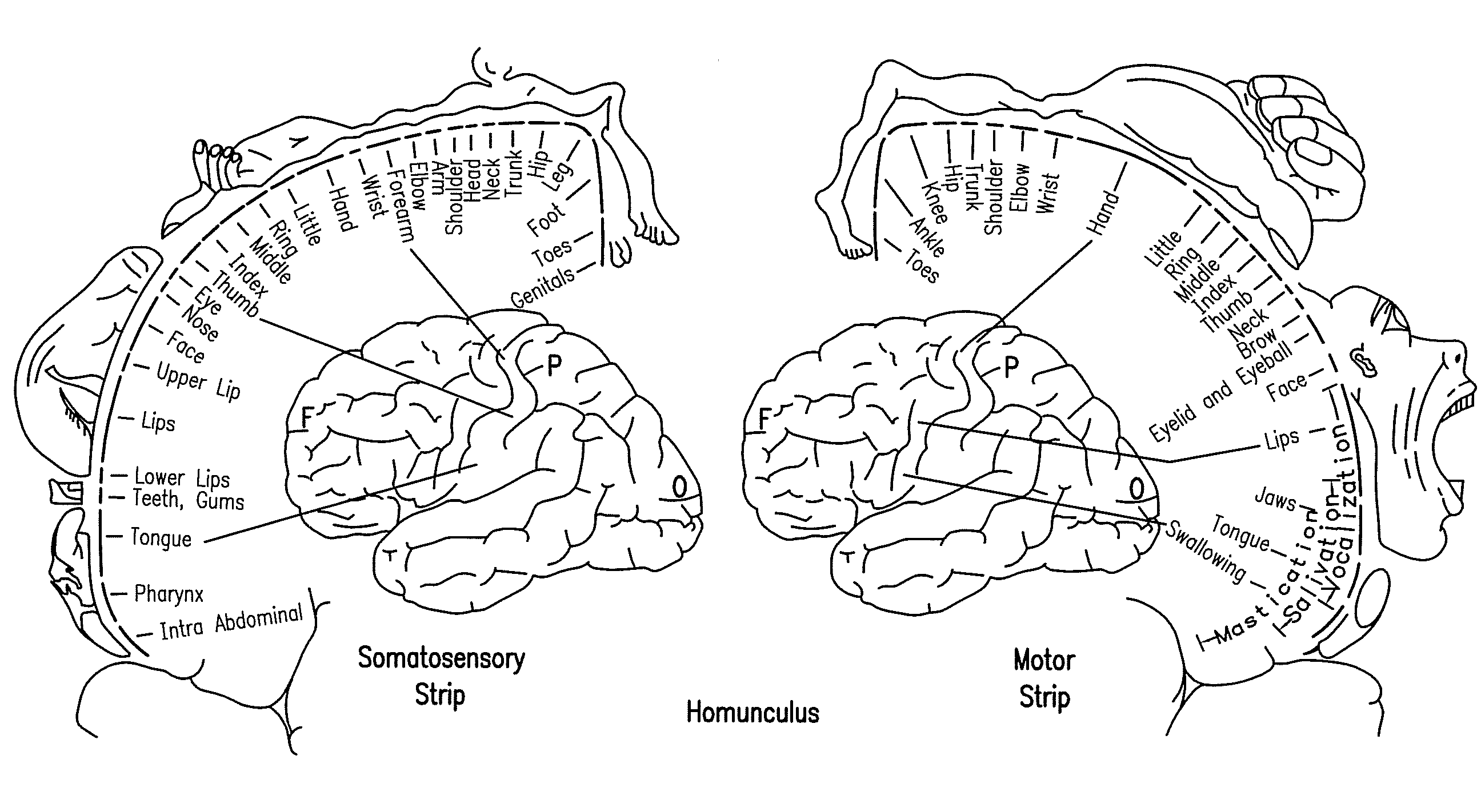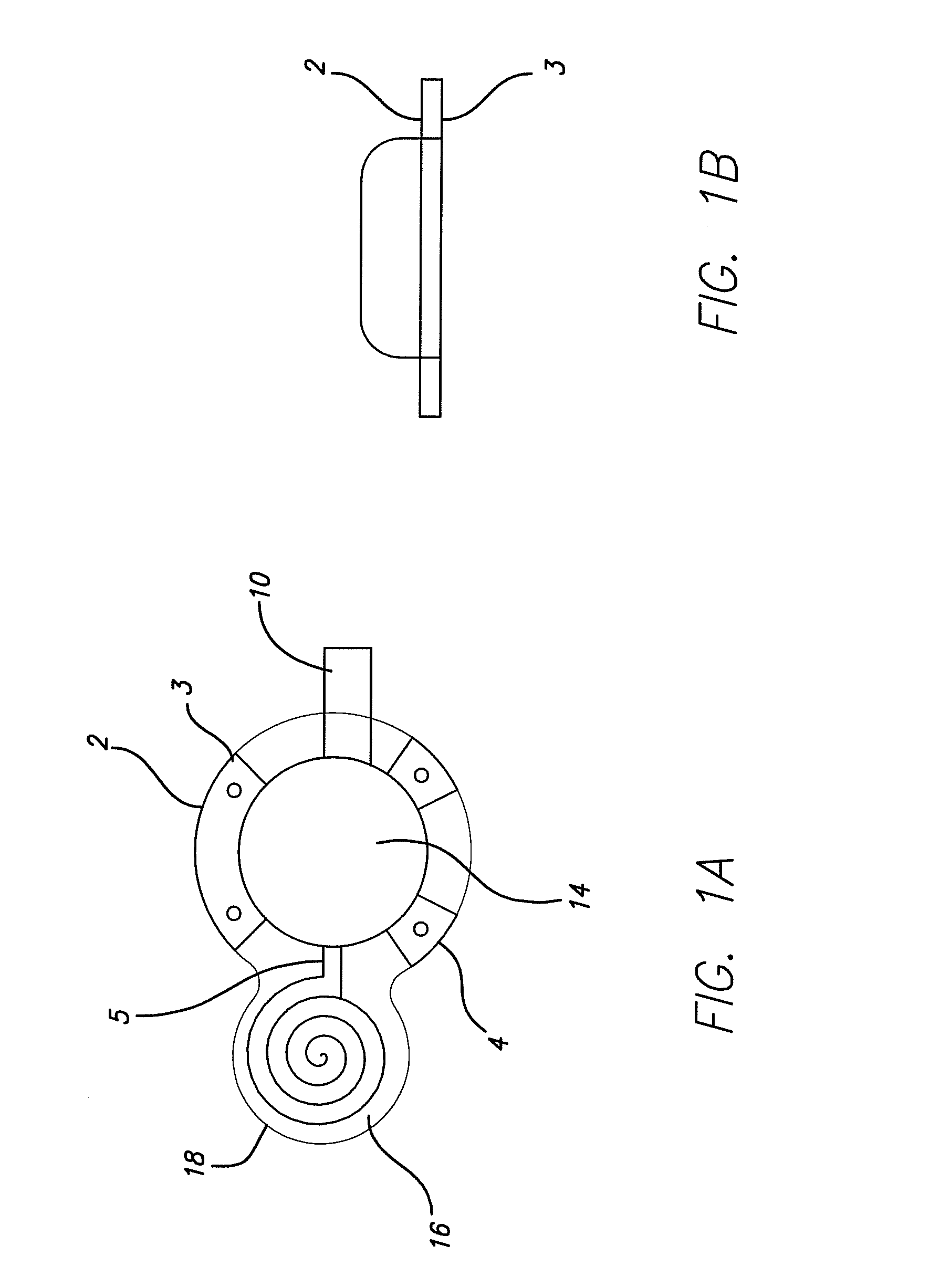Cortical Interface for Motor Signal Recording and Sensory Signal Stimulation
a cortical electrode and motor signal technology, applied in the field of implantable devices, can solve the problems of difficult to achieve the long-term functional stability of intracortical electrodes, require a substantial degree of user training, and are often unreliabl
- Summary
- Abstract
- Description
- Claims
- Application Information
AI Technical Summary
Benefits of technology
Problems solved by technology
Method used
Image
Examples
Embodiment Construction
[0092]The following description is of the best mode presently contemplated for carrying out the invention. This description is not to be taken in a limiting sense, but is made merely for the purpose of describing the general principles of the invention. The scope of the invention should be determined with reference to the claims.
[0093]This application is a cortically driven motor prosthesis: electrodes implanted on or in motor strip, which when activated cause involuntary movements in the subject. The implant provides control for external robotic prosthesis—implant with recording electrodes on or in pre-motor (forward of motor strip) or motor strip, which sends data wirelessly to an external processor which drives a robotic limb (arm, hand, leg, foot) or stimulates muscles in a deinervated arm, hand, leg, foot, face, tongue, etc.)
motor signal neural recorder and a somatosensory prosthesis providing motor control and external or implantable sensors that respond to—
a. Pressure
b. Tempe...
PUM
| Property | Measurement | Unit |
|---|---|---|
| Flexibility | aaaaa | aaaaa |
Abstract
Description
Claims
Application Information
 Login to View More
Login to View More - R&D
- Intellectual Property
- Life Sciences
- Materials
- Tech Scout
- Unparalleled Data Quality
- Higher Quality Content
- 60% Fewer Hallucinations
Browse by: Latest US Patents, China's latest patents, Technical Efficacy Thesaurus, Application Domain, Technology Topic, Popular Technical Reports.
© 2025 PatSnap. All rights reserved.Legal|Privacy policy|Modern Slavery Act Transparency Statement|Sitemap|About US| Contact US: help@patsnap.com



